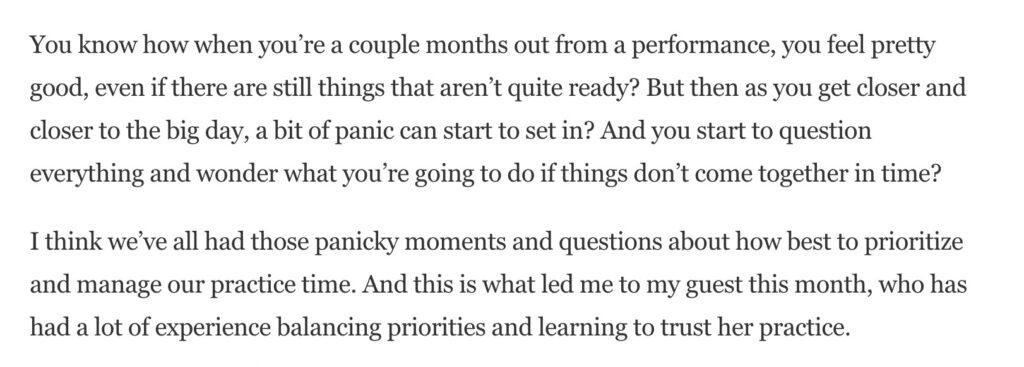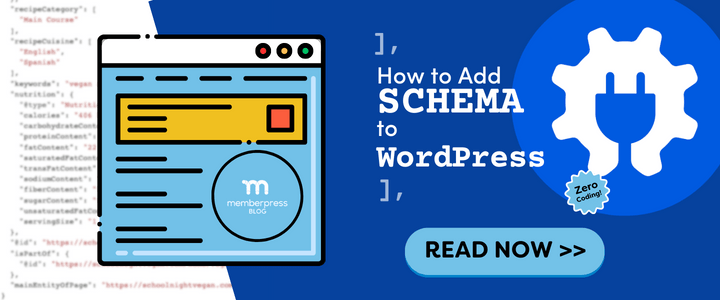You’ve got great ideas, but the traffic isn’t showing up. These 15 blog writing tips can help you change that! Read on to bring more readers in.
Struggling to get traffic and engagement on your blog posts doesn’t mean you’re not talented, it might just mean there are a few key areas that need a little boost.
That’s exactly why we’ve put together these 15 in-depth blog writing tips. These will help you figure out what your blog might be missing and show you how to take it to the next level.
Blog Writing Tips For Posts That Are Worth Reading
Anyone can hit “publish”, but not everyone can earn attention, build trust, or keep readers coming back. That’s what great blog writing actually does.
Think about what makes you click away from a blog post. If it sounds gimmicky, is full of useless fluff, or is difficult to follow and find the information you need, you click away, right?
Here are some blog writing tips that will help you set the right tone, convey authority in your niche, and get readers coming back to your site for great content.
1. Write Catchy Headlines

A strong headline grabs attention and also directly impacts your click-through rate (CTR) and even your search engine rankings.
Search engines and readers both pay close attention to headlines. If your title isn’t clear or interesting, your content may never get the chance it deserves.
On the other hand, a compelling headline can dramatically boost visibility, clicks, and engagement even before anyone reads the first sentence.
Tips for Writing Headlines That Work
- Use power words like “proven,” “secret,” “easy,” or “effective” to create emotional impact.
- Add numbers (like “7 ways” or “15 tips”), they give structure and set expectations.
- Spark curiosity by hinting at something valuable or surprising, without giving it all away.
- Keep it clear and specific; people want to know exactly what they’ll get by clicking.
You can also use a tool like BuzzSumo to analyze viral headlines in your niche, so you can see what works and why.

Lastly, look at what top-performing posts have in common, then use that insight to craft your own standout titles.
2. Start with an Irresistible Blog Introduction
You’ve got just a few seconds to grab your reader’s attention – literally. The 15-second rule means if your intro doesn’t hook them fast, they’ll likely bounce and never come back.
A strong blog introduction pulls readers in and makes them want to keep going. Here are a few things to bear in mind:
Tell a Story
One of the most effective ways to draw people in is through storytelling. A quick personal story, a relatable scenario, or even a question that hits a nerve can set the tone and make readers feel like they’re in the right place.
Take this example from MemberPress site owner, BulletProof Musician’s blog post:

In this powerful opener, the writer shares a scenario that his audience of musicians will relate to. It’s a great hook to get the right people engaged and inspired to read on.
Use the “PAS” Formula
You can also use the PAS formula, a classic copywriting structure that works especially well in blog intros. Here’s how it works
P is for “Present the problem”
Introduce readers to a problem or familiar pain point they might be battling with.
Example: You’ve been trying to stay consistent with your workouts, but life keeps getting in the way and motivation disappears fast.
A is for “Agitate the problem”
Dig a little deeper. Highlight the frustration or consequences of that problem.
Example: You feel guilty for falling off track, but starting over again and again is exhausting and discouraging.
S is for “Solution”
Tease the value your blog post is about to deliver.
Example: But building a consistent routine doesn’t have to mean doing it all on your own. In this post, we’ll cover five strategies that make it easier to stay on track without relying on willpower alone.
Speak with Certainty and Authority
Don’t sound unsure, speak with certainty, and where possible use stats to back up your point.
Example: “According to HubSpot, 73% of people admit to skimming blog posts rather than reading every word.”
This kind of insight helps show that your post is relevant and worth reading.
3. Make Your Blog Post Readable
With shrinking attention spans and constant online distractions, readers simply don’t have the patience for long-winded sentences or bulky paragraphs.
If your content looks overwhelming, most people will click away before they even begin.
Here are a few rules of thumb:
- Use bullets and headers to break up big chunks of text.
- Keep your sentences under two lines.
- Keep paragraphs under four lines (the old rule, “never write a single-sentence paragraph” is 100% outdated).
- Use numbers and figures to give your text a more open feel.
Readability is one of the easiest blog writing tips to put into practice. Just hit return a few times and reformat long paragraphs and you’re good to go!
4. Write in a Clear, Engaging, and Conversational Tone
Think of your blog as a conversation rather than a text book. If your writing sounds stiff, formal, or complicated, readers will quickly lose interest.
Be clear, relatable, and easy to follow.
Here’s how to strike the right tone:
- Skip the jargon. Big words and industry lingo can create distance. Instead, use everyday language that your audience understands.
- Keep sentences simple. Long, winding sentences can confuse readers. Stick to one idea at a time.
- Talk to your reader. Use “you” to make it feel personal. Write in an active voice to make your message clearer and stronger. For example, say “You’ll learn how to improve your writing,” not “Writing can be improved by learning.”
- Use analogies, examples, or a touch of humor. These make your points more memorable and help your content feel human, not robotic.
Helpful Tools:
- Grammarly: Great for catching grammar mistakes and suggesting tone improvements.
- ChatGPT: Use it to rewrite stiff sentences or help brainstorm more engaging ways to say something.
But be careful here! ChatGPT often defaults to using robotic or formulaic language. A great way to avoid this is to start with a prompt that tells it to write in a specific tone.
Example: “Rewrite this paragraph as if you’re a parenting blogger chatting with another parent. Keep it casual, encouraging, and avoid buzzwords or clichés.”
This kind of prompt helps ChatGPT produce content that sounds more human, natural, and in line with your brand voice.
5. IMPORTANT: Be Original!
This one can’t be stressed enough – originality matters. If your blog is just repeating what’s already out there, readers (and Google) will quickly lose interest.
And avoid scraped content and never use the services of a content farm. Google will penalize you for it, and your readers will spot this sort of low quality from a mile away.
Your content should reflect your brand, your voice, and your audience’s needs. That means offering your own insights, experiences, or angles – not copying and pasting what’s already been said.
6. How AI Can Improve Blog Writing (But Not Replace You!)
ChatGPT can be a fantastic tool for refining your writing or reworking awkward phrasing. It’s also a helpful ally when you’re staring down a blank page with a bad case of writer’s block.
But overuse it at your own risk.
Many can spot ChatGPT-generated content a mile away – and chances are, some of your readers can too. If they haven’t already, it won’t be long before search engines start catching on as well.
Common “ChatGPTisms” to Watch Out For:
- Generic phrasing that feels lifeless or impersonal
- Overly peppy clichés like “Buckle up and let’s dive in!”
- Recycled ideas that don’t add anything new
- Flat storytelling with no voice, depth, or real examples
- Fluffy transitions like “In today’s digital landscape…” or “It’s not just about X, it’s about Y…”
- Factual errors. ChatGPT can sound confident and still be completely wrong
Don’t let AI write your blog post from scratch and remove your personality and authority. Instead, use it as a helpful assistant / editor.
Here’s how to get the best out of it:
- Idea Generation – Use ChatGPT to brainstorm topics or get unstuck. Then shape those ideas with your own perspective.
- Sentence Rewrites – Stuck on awkward phrasing? Let ChatGPT suggest smoother alternatives, but always make it sound like you. (See above in point 4)
- Editing & Summarizing – It’s great for trimming the fat, but let your personal style lead the way.
AI is helpful, but your unique voice, insights, and experience are what make your writing worth reading.
SEO Blog Writing Tips To Improve Organic Traffic
7. On-Page SEO Blog Writing Tips to Boost Rankings
Even the best-written blog post can go unnoticed if it’s not optimized for search engines. That’s why you can’t skip these on-page SEO best practices.
Key On-Page SEO Practices
- Place your keywords strategically: Make sure your main keyword shows up in your title, the first 100 words, at least one subheading, and naturally throughout the content. Avoid keyword stuffing – focus on flow.
- Use internal linking wisely: Link to other relevant blog posts or pages on your site. This helps with SEO, improves navigation, and keeps readers exploring your content longer.
- Optimize your images: Use descriptive image alt text that includes relevant keywords when appropriate. This helps with accessibility and can boost your visibility in image searches.
Helpful SEO Tools
- SEMRush: Great for keyword research, analyzing search trends, and checking how well your content stacks up against competitors.
- AIOSEO (All in One SEO): Perfect for WordPress users looking to optimize meta titles, descriptions, readability, and more – all from your dashboard.
8. Google Rewards Quality
AI has brought in a wave of fluffy content with no real substance, and Google is on the lookout. Quality matters more than ever.
In simple terms, Google wants to show content that’s written by people who know what they’re talking about, backed by credible sources, and trustworthy enough for readers to rely on.
This means your blog posts should:
- Be well-researched and accurate
- Show your experience or expertise on the topic
- Include references or links to credible sources when necessary
Check out our blog on Google’s “E-A-T” guidelines: short for Expertise, Authoritativeness, and Trustworthiness.
9. Internal Linking
By linking to other relevant posts or pages on your site, you help search engines better understand your content and you keep readers engaged for longer.
Internal Linking Best Practices
- Use relevant anchor text: Instead of saying “click here,” link naturally using descriptive phrases (e.g., learn how to start a membership site). This tells Google what the link is about.
- Add links contextually: Place links where they naturally fit into the flow of your content – don’t force them and interrupt the flow of your writing.
- Include related post sections: Add a “You Might Also Like” or “Related Posts” section at the end of your article to keep readers moving through your site.
10. How to Optimize Blog Posts for Featured Snippets
Featured snippets are those answer boxes at the top of Google’s search results – These can drive a significant amount of traffic to your blog.

And you don’t need to rank #1 to earn one. You just need to give Google exactly what it’s looking for: clear, structured, and helpful content.
Tips to Increase Your Chances of Being Featured:
- Answer common questions clearly and concisely: Use straightforward language and get to the point quickly. Aim to answer the question in the first sentence or two of a section.
- Use lists and tables: Google favors content that’s well-structured and easy to scan. Bullet points, numbered steps, and simple tables make your content more snippet-friendly.
- Add schema markup: Schema helps search engines better understand your content and increases your chances of being selected for a featured snippet. Here is how to add one to your post.
11. End Your Blog Post with a Strong CTA
Finish strong with a clear call to action (CTA). A strong ending wraps up your message and also guides your readers on what to do next, whether that’s exploring more content, leaving a comment, or sharing your post.
Examples of Effective CTAs:
- “Found this helpful? Share it with a friend who might need it too!”
- “Have questions about this topic? Let’s talk in the comments!”
- “Want to learn more? Read our guide on [related topic].”
- “Ready to get started? Try MemberPress today.”
A well-placed CTA helps turn passive readers into active participants, and that’s a big part of growing a successful blog.
Keeping Your Blog Evergreen: Repurposing & Recycling Content
12. Repurpose Blog Content
This is one of the most overlooked blog writing tips that can save you a heap of time and effort.
You don’t have to create something new every time you want to publish. One blog post can turn into multiple pieces of content, helping you reach more people across different platforms.
Repurposing content will save you time, and also reinforce your message, and increase your content’s lifespan.
Smart Ways to Repurpose Blog Posts:
- Social Media Posts: Turn key points into Twitter threads, Instagram captions, or LinkedIn carousels to share insights in bite-sized formats.
- Videos or Podcasts: You could use a tool like Lumen5 that turns blog posts and written content into short, engaging videos – perfect for repurposing key takeaways into shareable clips for social media.
- Email Newsletters: Summarize your blog’s main takeaways into a quick, valuable message for your email subscribers.
- Lead Magnets: Combine a few related blog posts into a downloadable guide or eBook that you can offer in exchange for an email address. Canva is a great tool for this.

13. Don’t Just Repurpose – Recycle Your Content Too
Recycling content isn’t lazy, it’s smart. In fact, bringing older posts back into the spotlight is one of the easiest ways to keep your blog active without constantly starting from scratch.
It’s a great way to reintroduce valuable content to new readers who may have missed it the first time and it saves you time while still delivering value.
How to Refresh and Recycle Blog Posts:
- Update old posts with current data, new examples, and relevant insights. This keeps your content accurate and trustworthy.
- Do an SEO refresh by updating outdated keywords, fixing broken links, and reworking headlines or meta descriptions.
- Republish top-performing content with a fresh perspective or updated angle – and don’t forget to change the publish date to give it new life in your feed.
Tools to Help:
- Google Search Console: Identify blog posts that are losing traffic and need a refresh.
- SEMRush: Track keyword performance and find new SEO opportunities within existing content.

14. Schedule your Blog and Mix It Up
One of the best ways to make sure you’re keeping your content varied is to use a content calendar.
Listing things out in a schedule gives you a bird’s eye view of your topics. It helps you mix things up so that each day features a different theme.
For example, you might pick different days of the week to write about news in your industry, spotlight a client, conduct case studies and product reviews, or invite guests to post.
15. Make the Most of Guest Posts
Speaking of guest posts, these little gems can help both your blog and business in multiple ways. In particular, guest posts save you time and expand your reach. After all, if someone else writes a post, that means you don’t have to.
Plus, your guests’ readers will be directed to your site to read their articles. And if you return the favor and write a post for another blog, that blog’s readers will be exposed to you and your company.
Conclusion
The blog posts that feel easy to read are almost never easy to write. There’s a lot of behind-the-scenes work that goes into making something clear, engaging, and (most importantly) actually useful.
We’ve given you 15 tips, but don’t feel you have to apply them all every time! Writing is as much an art as it is a science.
Treat this list as more of a toolkit you can reach for when something’s not quite working, or when you want to tighten up a draft that’s almost there.
Try a few. Ignore the ones that don’t fit. Come back to the list when you need it.
And if you’ve got a go-to writing trick that works every time, share them here in the comments! We’d love to know what’s bringing readers back to your blog.

Get MemberPress Today!
Start getting paid for the content you create.
If you found this article helpful, follow us on Facebook, Twitter, Instagram, and LinkedIn!















Add a Comment